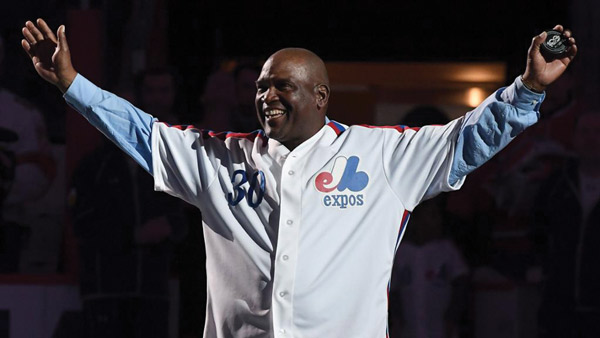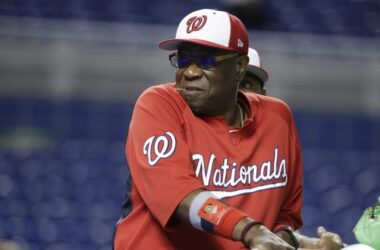It was a long journey for former Expos left fielder Tim Raines—from the end of his playing days in 2002 to finally walking out onto the Olympic Stadium turf on the evening of March 31 as part of the 2017 MLB Hall of Fame class. With 2,605 career hits, a .294 career batting average, and 808 career steals, Raines is undoubtably a Hall of Famer. However, his path to Cooperstown was unlike any other.
In 2008, Raines’ name first appeared on the Hall of Fame ballot. Five years after his final at-bat, Raines received 24 per cent of the vote, 51 per cent below the three-quarters he needed to be inducted. The following year, things went from bad to worse for Raines who saw his Hall of Fame stock fall to 22 per cent, leaving him with essentially no chance of ever making it into the Hall.
If Raines had 400 more hits to get him to the arbitrary 3,000 plateau, he would have been a first ballot Hall of Famer. However, making contact and being a threat on the basepaths were not Raines’ only skills. He had an eye that rivaled the best in the game and he knew how to take a walk. He managed to get on base at a prolific rate and could go from first to second with remarkable speed. To baseball geeks, Raines’ absence from baseball immortality was absurd, considering that if a third of his career 1,330 walks were bunt singles–essentially having the same effect as a walk—he would have reached 3,000 hits and easily made it to Cooperstown.
Luckily for Raines, a childhood Expos-fan-turned-sportswriter made it his life’s mission to get Raines into the Hall of Fame. Montreal’s Jonah Keri began contacting every Hall of Fame voter to make Raines’ case. The argument was simple: Raines reached base 3,977 times in his career–more than Hall of Famers Tony Gwynn, Roberto Clemente, Eddie Matthews, and Brooks Robinson–he was one of the scariest leadoff hitters of his era and, according to one advanced baseball metric, he is the sixth-greatest left fielder in baseball history. Of course, he also won two World Series with the Yankees in the mid-90s. Though his résumé might be missing those flashy multiple-of-ten milestones, to Keri, assuring his hero’s place in the Hall of Fame was paramount.
Slowly, things began to change for Raines. In 2010 he saw an uptick in his Hall of Fame votes, reaching 30 per cent and crossing the 50 per cent mark in 2013. In his penultimate year on the ballot, he received 70 per cent of the vote, still 5 marks away. The following year, his last on the ballot, Keri made his plea public, writing an open-letter to Hall of Fame voters, insisting Raines should be in the Hall.
“I hope that this note will help nudge you toward voting for Raines,” Keri signed off the letter. “[…] Thanks for your consideration! Jonah.”
And it worked! Of course Raines was the happiest when he got the call from the Hall of Fame after receiving 86 per cent of the vote, and Keri was certainly second, celebrating at home as he watched his childhood idol make the Hall.
Of course, Raines certainly deserves most of the credit as he was the one standing in the batter’s box making the plays, however as one Hall of Fame voter wrote, “I give Jonah Keri credit for carrying the torch. He is right. There is no good reason Raines isn’t in the Hall.” Now after nine years toiling on the Hall of Fame ballot, both Raines and Keri will head to Cooperstown for the induction ceremony in July.








